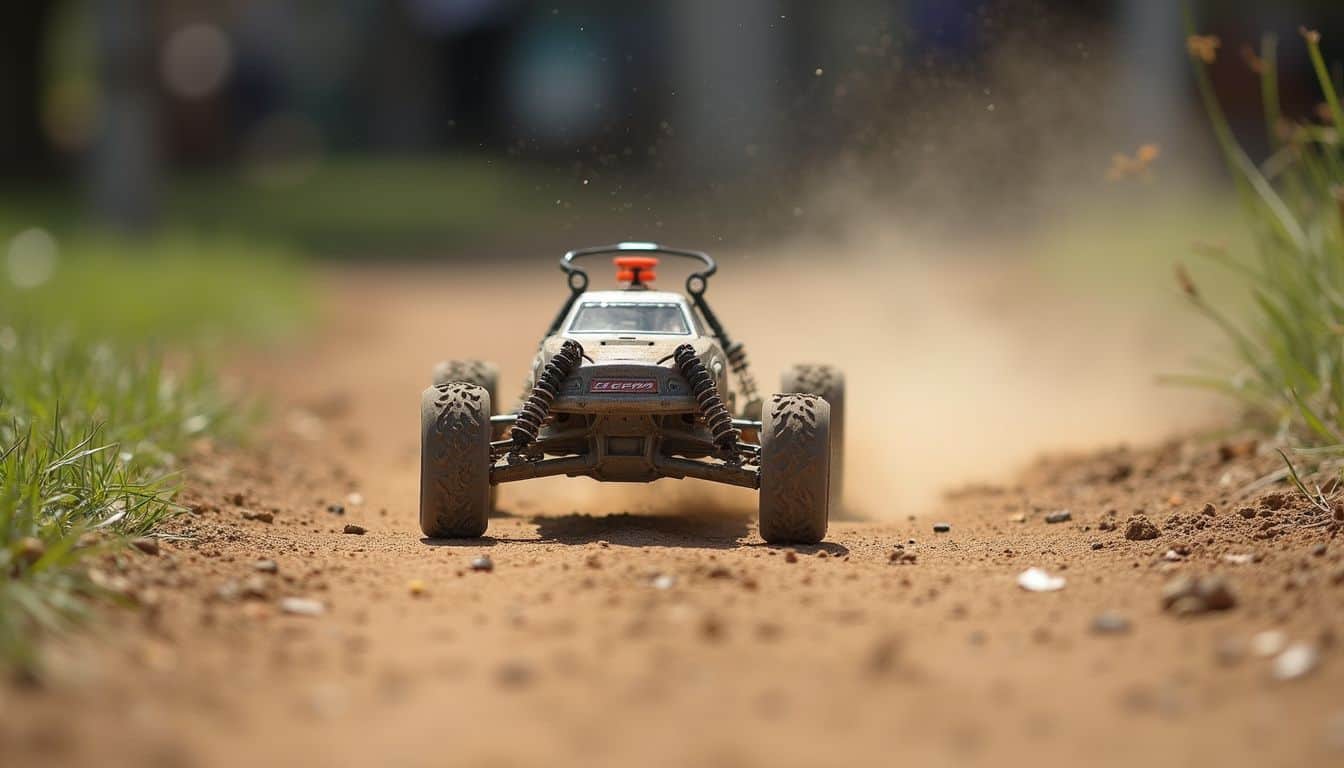Feel like your RC car is lagging? A lithium polymer, or LiPo, battery can deliver a quick 20 to 40 percent speed jump with stronger punch off the line.
This guide shows nine proven upgrades. You will tune the gear ratio, choose the right tire compound, and add a brushless motor system. Ready for real speed? Let’s get moving.
Key Takeaways
Switching to a LiPo battery often adds 20 to 40 percent speed over nickel-metal hydride packs. Track driver Alex Ramirez shared similar gains in March 2023.
Replacing a brushed motor with a brushless motor, then tuning ESC timing to 15 to 25 degrees, raises top speed and acceleration.
Dropping weight with carbon fiber or aluminum parts, plus lighter wheels, sharpens handling and straight-line pace.
Race tires that match the surface, like slicks or mini pins, and low-drag bearings reduce rolling resistance and add grip.
Basic maintenance, smart checks before each run, and correct LiPo storage keep peak speed consistent over time.
Table of Contents
Motor Upgrades for Speed
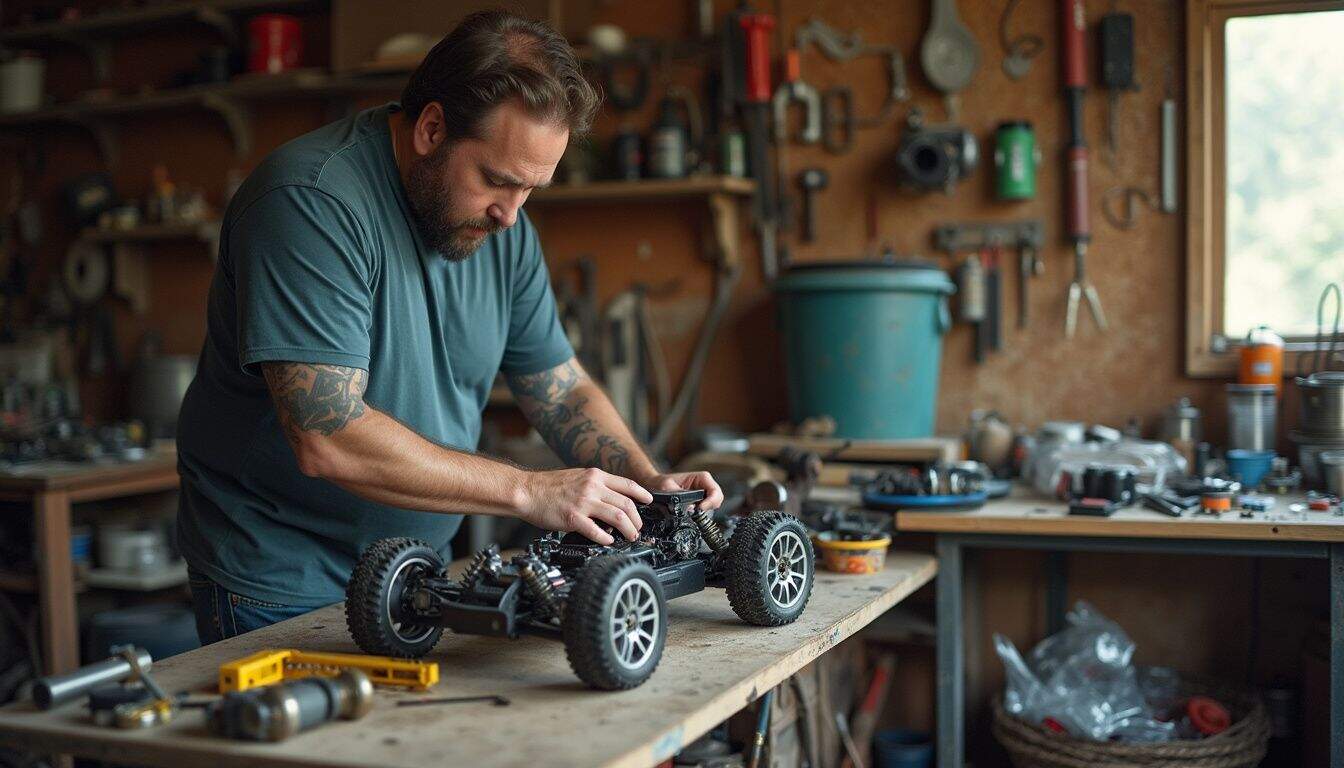
A brushless setup is the biggest motor leap you can make. Brushless motors have no brushes rubbing inside, so less friction and more efficiency. Pair that with a quality electronic speed controller, or ESC, and the car wakes up fast.
Brands like Castle Creations offer strong power systems for RC cars. Fine-tuning your electronic speed control will let you use every watt you paid for.
How do I install a brushless motor system in my RC car?
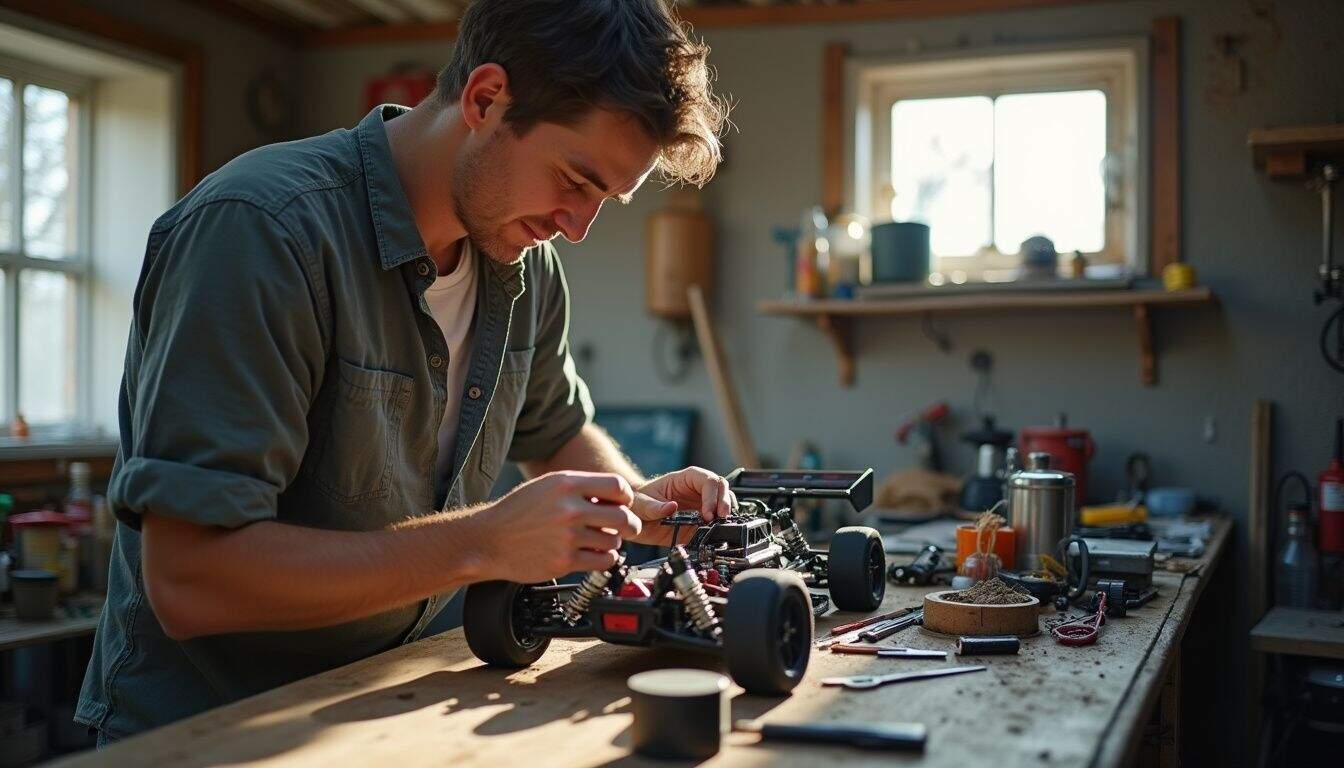
Upgrading to a brushless motor system brings big speed with reliable power. Gather parts and tools first, then follow these steps.
- Remove the old brushed motor. Keep screws, spacers, and mounts organized.
- Fit the brushless motor in the mount. Align it with the gear train.
- Select a compatible electronic speed controller that can handle the pack voltage and current.
- Connect ESC wires to the motor phases. Match colors to keep direction correct.
- Program the ESC. Set throttle, brake strength, punch, and timing to your style.
- Install the battery pack. Check that voltage and connector type match the ESC and motor.
- Set the gear mesh between pinion and spur gear. There should be a light tick, not binding.
- Check temps with a digital thermometer. Try to keep the motor case under 180°F, about 82°C.
- Secure wiring with zip ties or pads. Prevent rubbing on driveshafts or suspension.
After the first run, inspect the gear teeth and recheck screws. Read the ESC manual for any special calibration steps.
Safety note: treat LiPo batteries with care. Charge in a fire safe bag and never leave charging unattended.
How can I fine-tune motor timing for better performance?
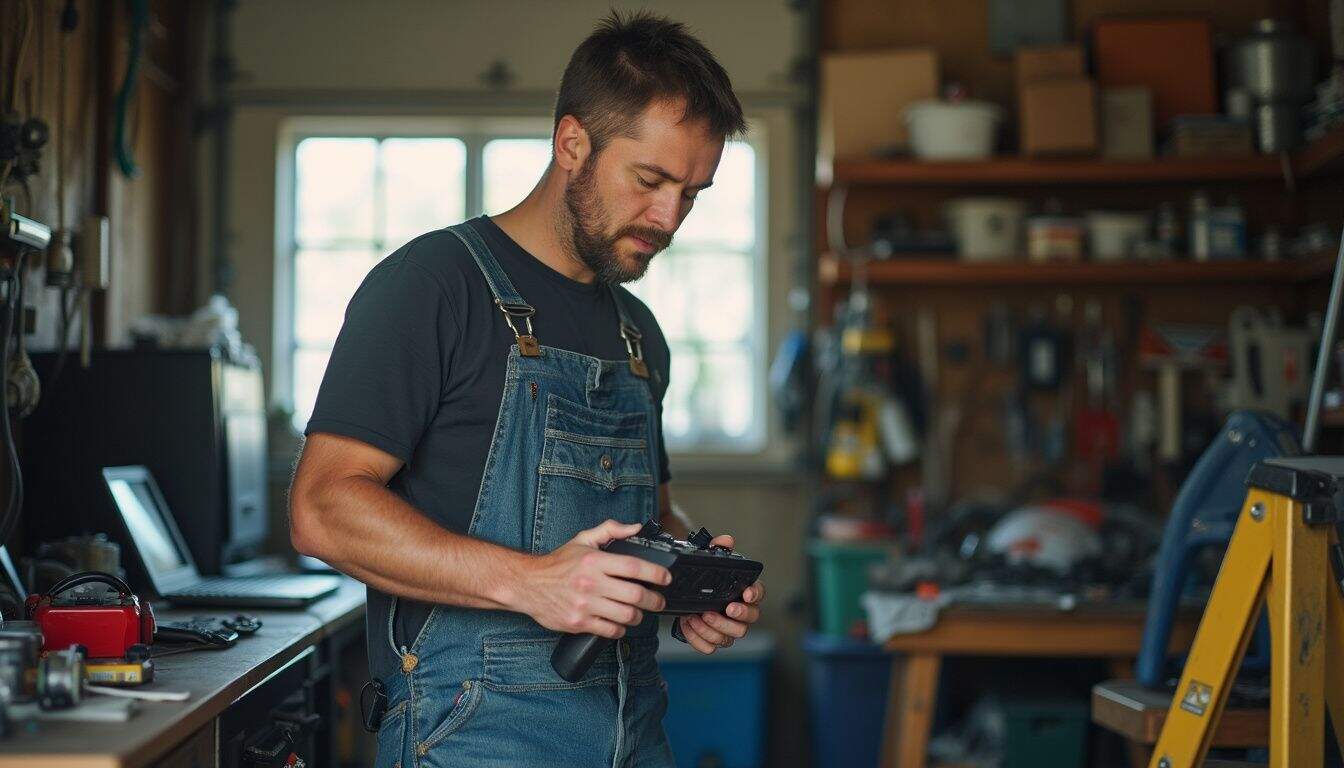
Motor timing is the phase angle the ESC applies to the motor. More timing can add speed, but heat rises too. Move in small steps and measure.
- Enable adjustable timing on your ESC. Try 15 to 25 degrees to start.
- Raise timing in small jumps. Watch for hotter temps and battery sag.
- Use an infrared thermometer. Keep the motor case below 180°F.
- Add a motor fan or improve airflow. Heat kills magnets over time.
- If you lack temp tools, avoid big timing changes.
- Test on a short loop. Use grippy tires like mini pins for clean data.
- Log speed or RPM with telemetry if possible.
- Tune gear ratios alongside timing. A taller gear can overload the system.
- Inspect solder joints after tests. Vibration and heat loosen weak connections.
Dialed timing plus the right gear ratio gives speed that lasts a full pack.
Optimize the Battery
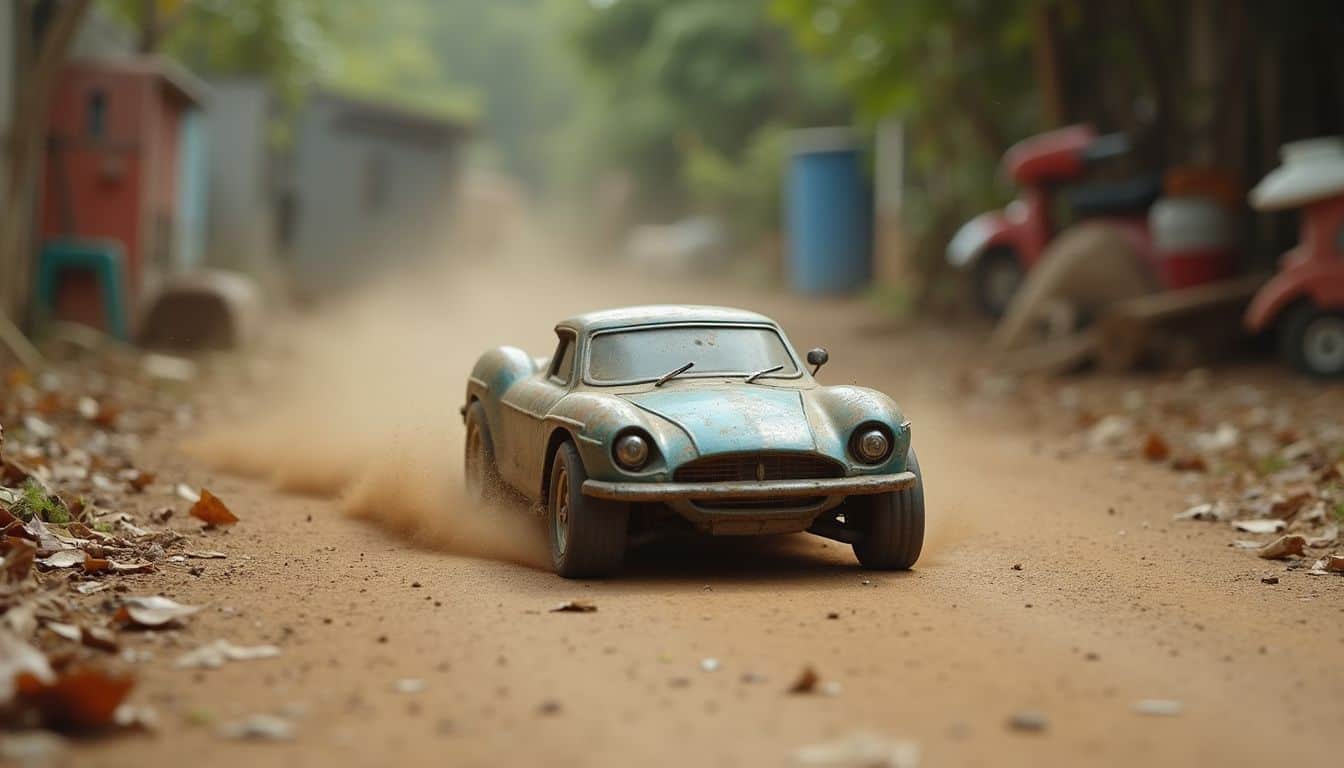
Battery power sets the ceiling for speed. LiPo packs deliver higher voltage under load and lower weight than nickel-metal hydride, or NiMH.
Use quality connectors and a good charger. Small electrical losses can cost real miles per hour.
What are the best high-performance batteries for RC cars?
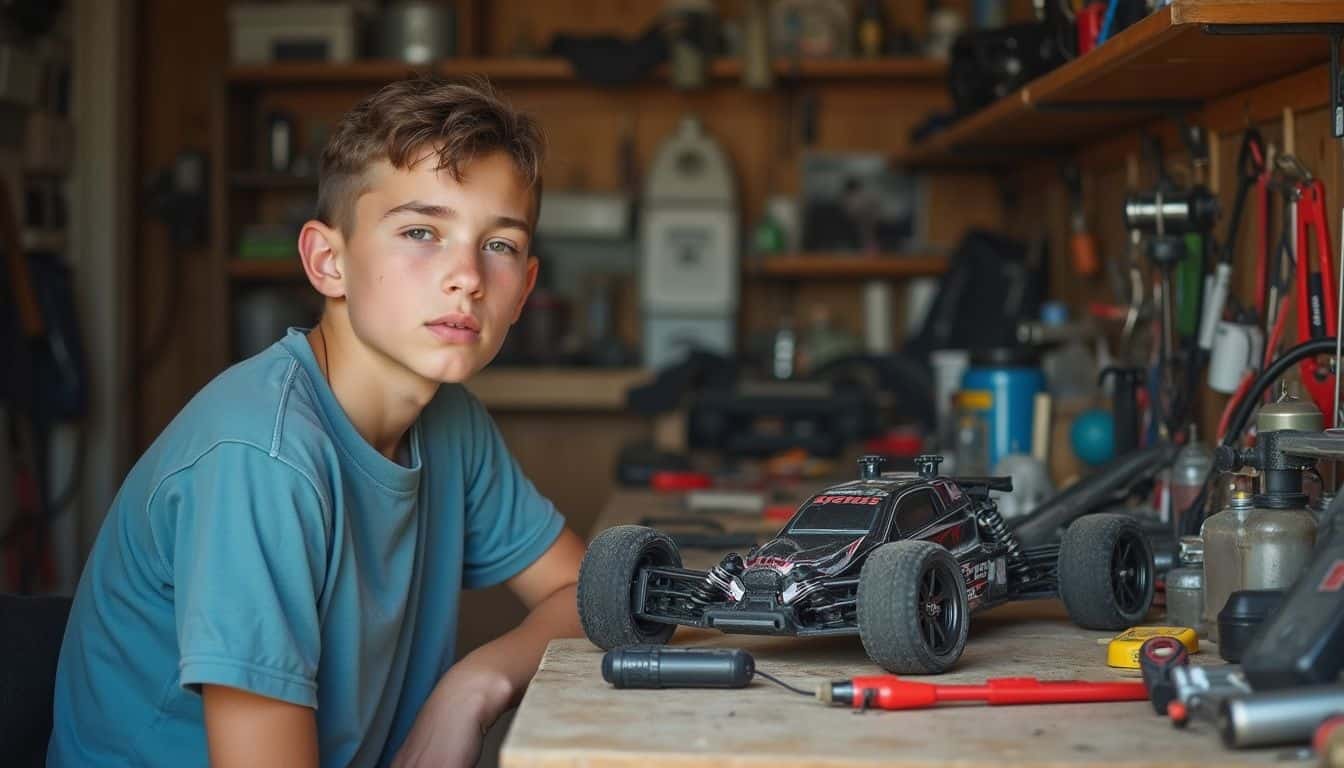 LiPo batteries rule for speed runs. A 2S pack gives 7.4 volts, while many NiMH packs sit near 6 volts. That extra voltage feels like a turbo button.
LiPo batteries rule for speed runs. A 2S pack gives 7.4 volts, while many NiMH packs sit near 6 volts. That extra voltage feels like a turbo button.
Higher capacity, like a Gens ace 5000mAh, extends runtime without a big weight hit. That means more laps at full power. Many drivers report 20 to 40 percent gains after moving from NiMH to LiPo.
Pair strong packs with a trusted charger for safety and life. A balanced setup with a brushless motor, correct tire compound, and clean bearings turns that energy into speed.
Safety note: charge LiPos in balance mode. Store at 3.8 volts per cell if the car sits for more than a few days.
How do I upgrade to a more powerful battery safely?
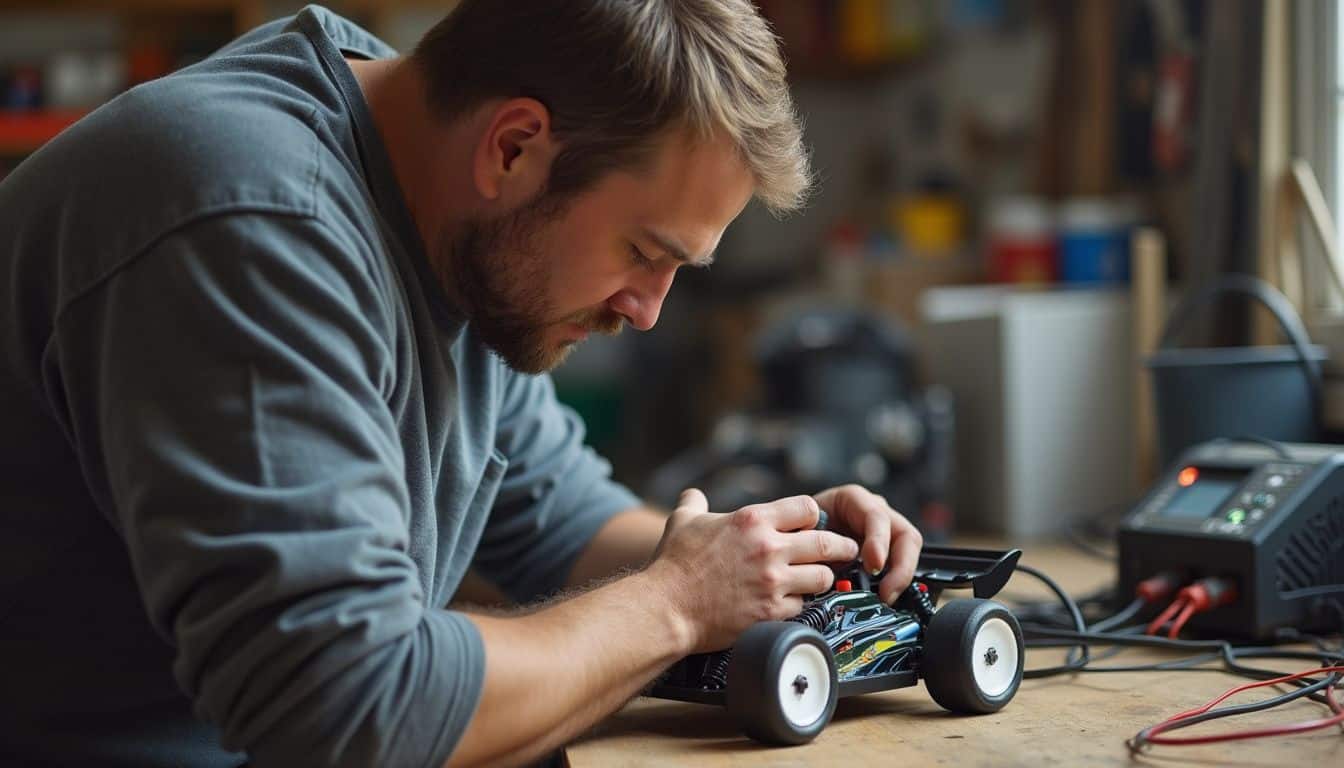
More voltage brings more speed. It also raises stress on electronics. Follow this checklist before stepping up.
- Confirm ESC and motor voltage compatibility for 3S or higher.
- Use a quality LiPo charger from a trusted brand.
- Match the pack’s C rating to motor and ESC current needs.
- Store packs at 3.8 volts per cell to prevent puffing.
- Avoid running a pack flat. Stop when power falls off.
- Touch-test battery temperature. Warm is fine, hot means trouble.
- Upgrade to XT60, Deans, or EC5 connectors for high current.
- Check physical fit in the battery tray before purchase.
- Secure wiring away from gears and driveshafts.
- Review warranty terms in your manual before major power mods.
Have a fire safe charging area. Keep a sand bucket or fire blanket nearby, just in case.
Adjust the Gear Ratio
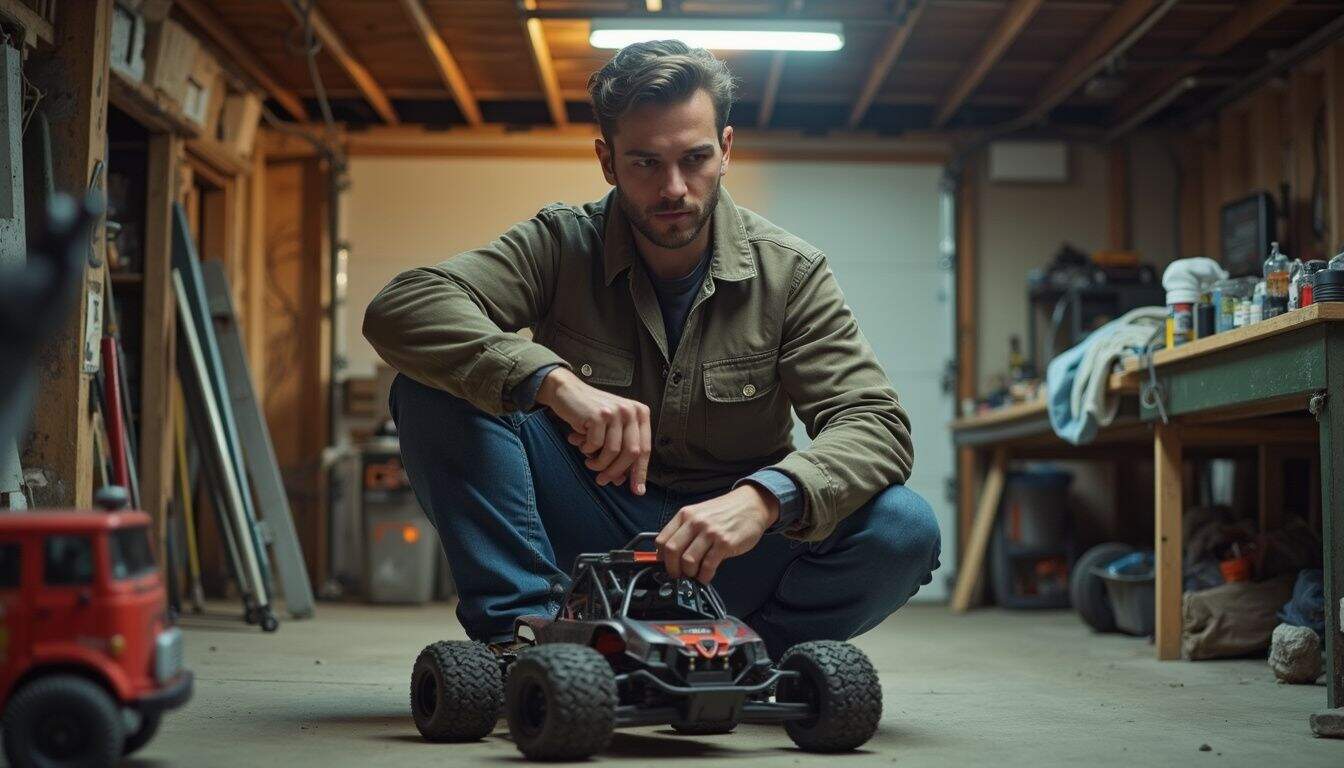
Your gear ratio is the pinion gear teeth divided by spur gear teeth. Small changes here swing top speed and torque a lot.
Use careful steps and watch heat. A tall ratio can cook the motor fast.
How does increasing the pinion gear size affect speed?
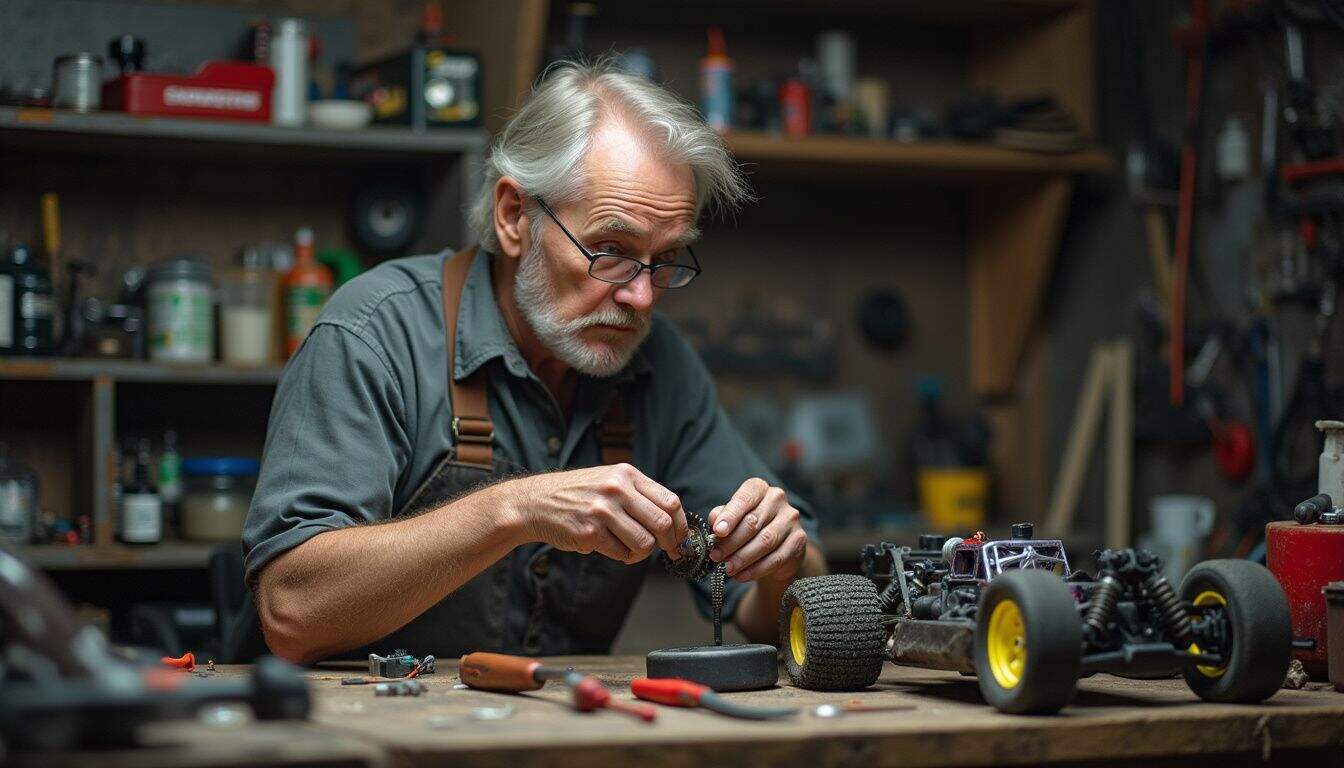
A larger pinion lowers the gear ratio and raises speed. The motor turns fewer times for each wheel turn, so top speed climbs.
Example: a 40-tooth pinion and an 80-tooth spur give 0.5 overall ratio, or 2 to 1 wheel advantage. That is fast on long straights. Heat rises with bigger pinions though, and runtime can drop.
Match gear pitch to your set, like 48 pitch or 32 pitch. Mismatched gears chew up teeth fast. Consider a smaller spur to balance things if you go very large on pinion.
How do I adjust the spur gear to improve my RC car’s speed?
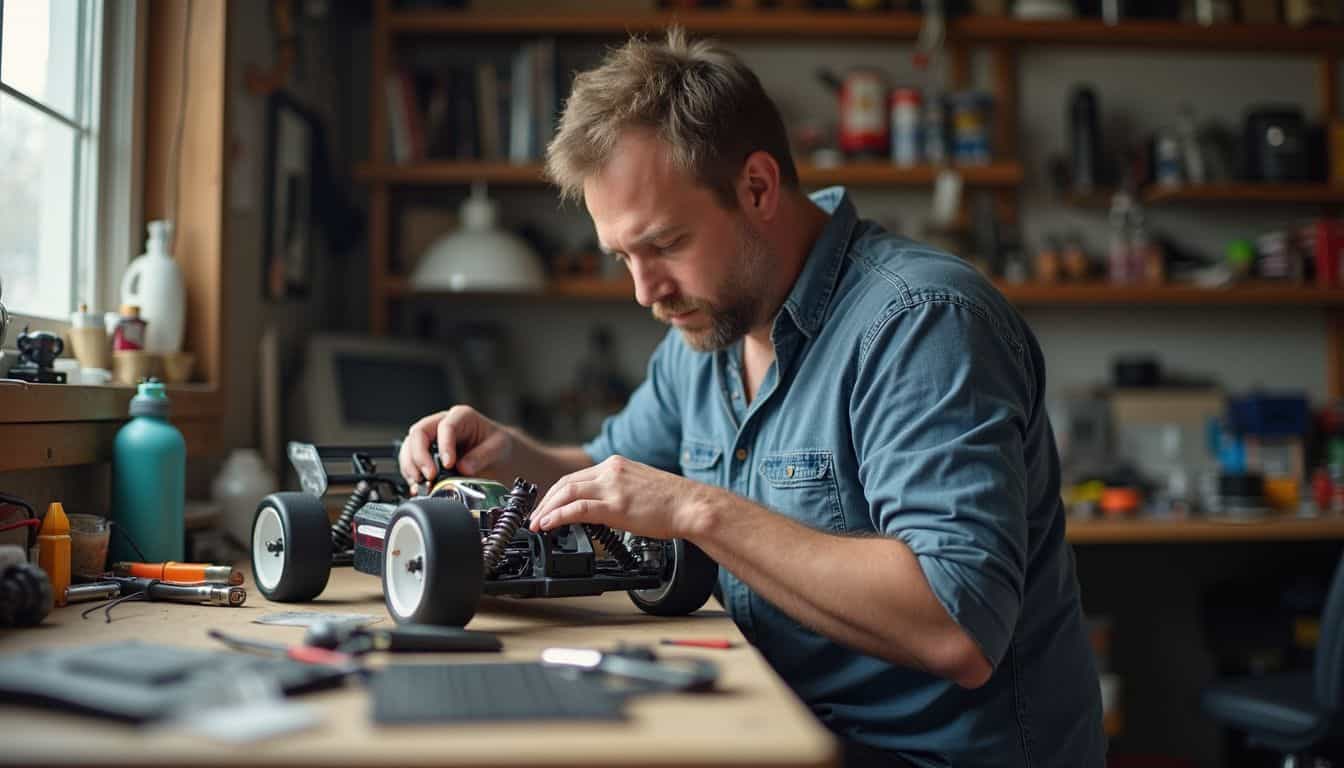
Spur gear changes fine tune your balance between top speed and punch. Make a plan, then test and measure.
- Use a smaller spur gear to raise top speed. Expect less low-end torque.
- Choose metal spurs for high power brushless motors.
- Pair spur and pinion with a gear calculator to avoid overload.
- Monitor motor temperature after each change. Back off if heat climbs.
- Larger spurs with smaller pinions aid acceleration on tight tracks.
- Lighter chassis parts, like carbon fiber plates, help you use taller gearing.
- Run GPS speed tests, for example with a SkyRC meter, to confirm the gains.
Clean the gear cover after dusty runs. Grit acts like sandpaper on your drivetrain.
Enhance the Tires

Tires link all your power to the ground. The right tread pattern and compound cut lap times and help the car drive straight at speed.
Which tires work best for different racing surfaces?

Slicks shine on clean asphalt or concrete. Less tread means less rolling resistance and higher speed.
Full spikes dig into soft dirt or grass for traction. Mini pins work great on carpet, and mini spikes handle loamy dirt with control.
Foam tires suit carpet tracks, while rubber slicks rule smooth pavement. Prepping matters. Clean tires before each run, and pick insert firmness that supports the sidewall without killing grip.
How do lightweight, high-traction tires improve speed?
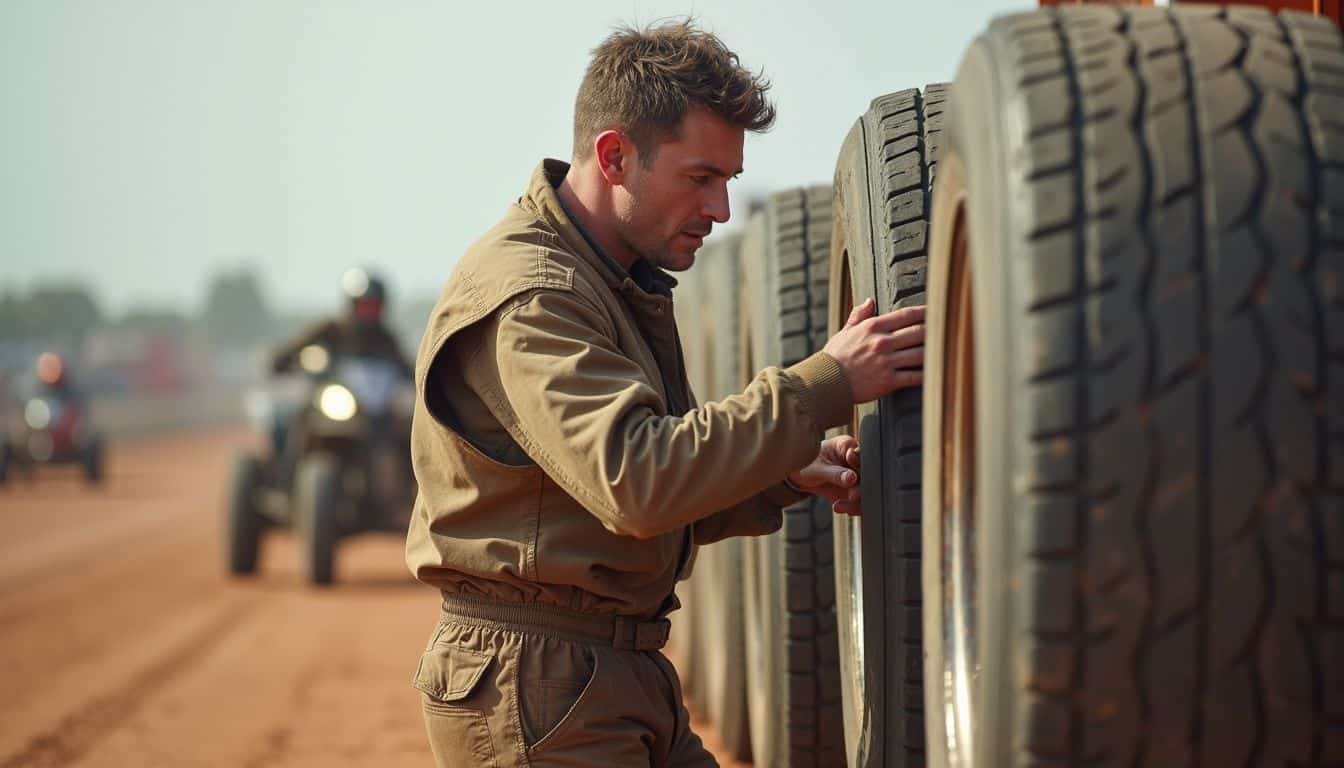
Lighter tires reduce rotating mass, so the motor spins them up faster. That quick launch feels like free power.
Soft compounds grip early and brake hard, but wear faster. Racer Mike Larson noted half a second off his lap after switching to a soft-compound set. Keep them clean and true. Use insert hardness to tune support for your surface.
Brands like Pro-Line offer multiple compounds for clay, carpet, or asphalt. If you race on pavement, try belted tires to cut ballooning at speed.
How Can I Reduce the Weight of My RC Car?
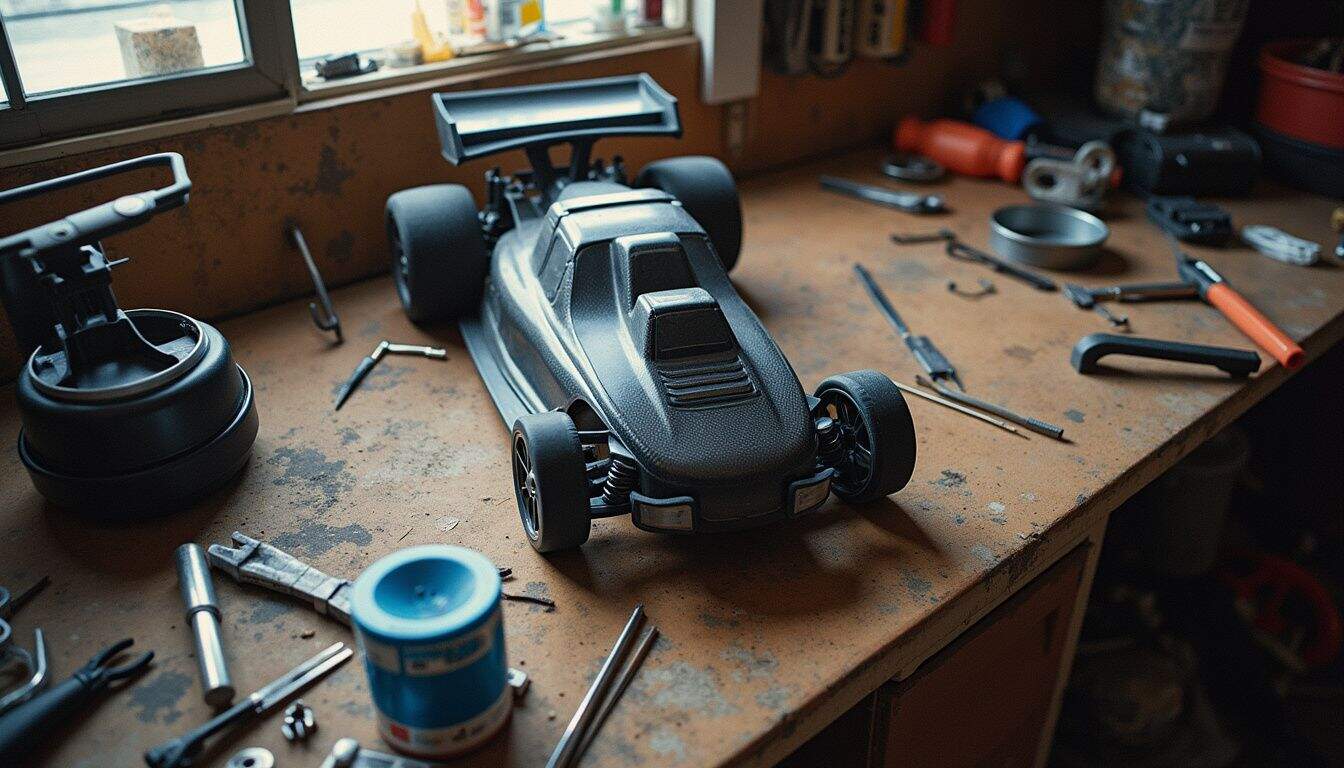
Less mass means quicker acceleration and shorter stopping. It also eases stress on the motor and lowers temps.
What components can I remove to lighten my RC car?

Small weight cuts add up. Focus on non-critical parts first, then look at rotating mass.
- Remove cosmetic mirrors, lights, and heavy spoilers.
- Clear out non-essential hardware or spare parts stashed in the shell.
- Swap to lightweight racing wheels for faster spools.
- Use thin paint coats and lighter body mounts.
- Change steel chassis plates to carbon fiber or strong polymers.
- Drop unused electronics or data gear you never check.
- Trim bumpers and add body cutouts where rules permit.
- Pick energy dense, lighter LiPo packs over older NiMH cells.
- Use cutout designs on shock towers and braces while keeping strength.
Track rules matter, so confirm what is legal before cutting plastic or aluminum.
Which lighter materials are best for the car body?
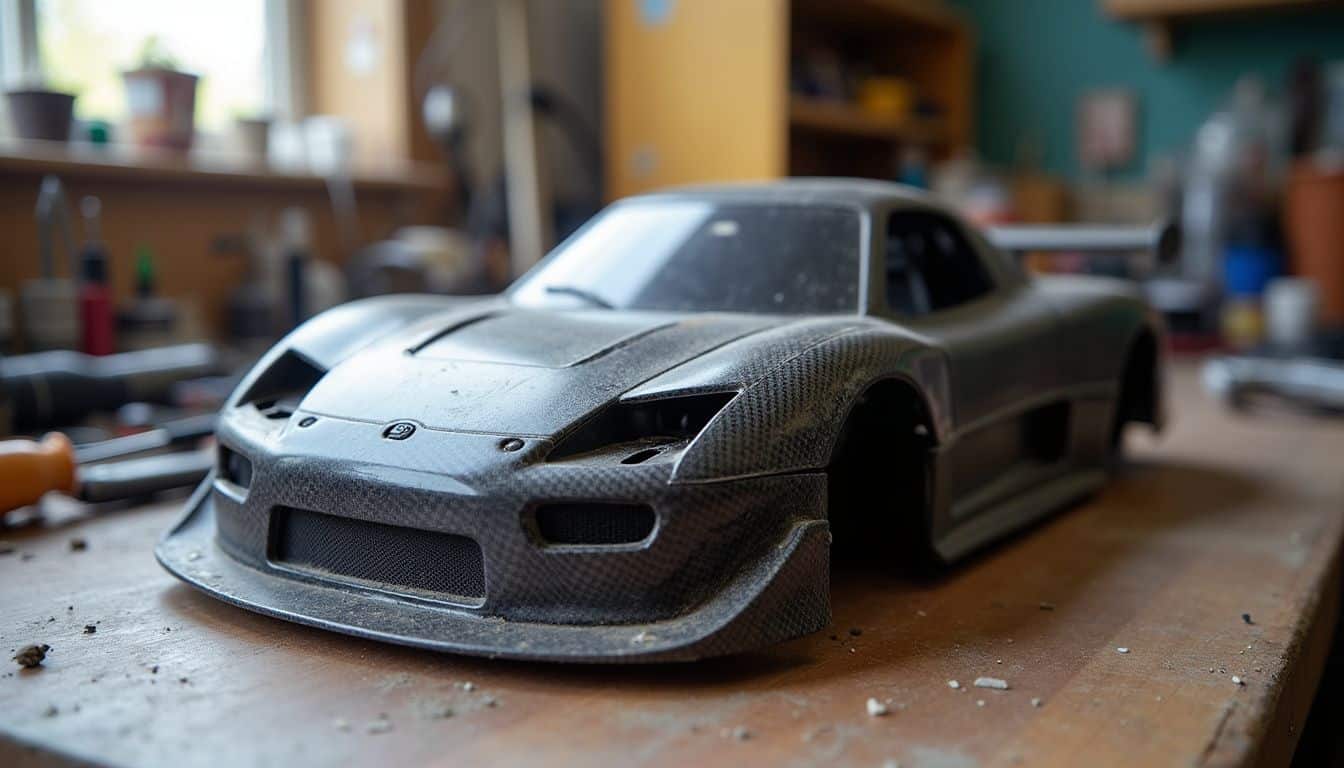 Carbon fiber is the top choice for strength-to-weight. It is stiff, light, and race proven.
Carbon fiber is the top choice for strength-to-weight. It is stiff, light, and race proven.
Aluminum panels are next best for durability with moderate weight. Reinforced nylon offers value for bashing and club racing.
Some drivers remove material where loads are low. Wheel arch trims and lightening holes can save grams while keeping stiffness.
The right material mix lowers total mass, which translates into faster acceleration and more stable braking.
Next, reduce drag so your lighter car slices through air with less effort.
How Can I Improve My RC Car’s Aerodynamics?

A smooth body shell and smart spoiler settings cut drag. Less drag means higher top speed and better battery life.
What are the benefits of installing an aerodynamic body shell?
An aerodynamic body shell reduces both drag and lift. The car tracks straighter and reaches a higher peak on long straights.
Adjustable rear spoilers tune downforce for grip or lower drag for speed. I swapped to a low-profile polycarbonate shell on my 1/10 buggy. Cornering felt calm at speed, and it stopped wobbling in crosswind.
Design cues echo icons like the Batmobile, where shapes serve airflow control.
How do I adjust body positioning to reduce drag?
Body placement changes airflow a lot. Small angle or height tweaks can show up in lap times.
- Lower the body shell closer to the chassis. That blocks air from getting under the car.
- Shift the shell slightly forward to clean airflow over the front tires.
- Angle the rear spoiler down a bit to limit lift without adding much drag.
- Tighten wheel arch gaps. Big gaps create messy air pockets.
- Use clips or spacers to tune body height at each corner.
- Pick a smooth, low-profile racing shell for 2024 and 2025 events.
- Nudge the shell left or right if crosswind pushes on your track.
- Lower ride height within safe limits to reduce frontal area.
- Choose lightweight polycarbonate shells to save grams and aid speed.
Test one change at a time. Keep notes so you can repeat fast settings later.
Upgrade Bearings and Suspension

Bearings and shocks decide how smoothly power reaches the ground. Less friction means more speed from the same battery.
Upgrading to steel ball bearings or ceramic hybrids reduces drag across the drivetrain.
Why should I use race-grade bearings in my RC car?
Race-grade bearings spin smoother and stay cleaner. That means sharper throttle response and higher top speed.
Sealed bearings keep out dust and grit, which protects hubs, transmission, and motor plates. Steel versions from brands like ISK are solid value. Ceramic options cost more, but cut friction further for serious racers.
Clean and lube them often. A five-minute service can bring back lost speed.
How do I dial in the suspension setup for better speed?
A balanced suspension keeps tires planted, even at high speed. Start with a baseline, then tweak for your surface.
- Select shock oil viscosity, the oil’s thickness, to control damping. Thicker oil stabilizes fast tracks, thinner oil gives quick response.
- Match spring rates to the surface. Stiffer for smooth asphalt, softer for rough dirt.
- Lower ride height to drop the center of gravity.
- Set spring preload so each wheel shares the load equally.
- Swap heavy parts for lighter ones, like carbon towers or titanium links.
- Use adjustable dampers to react to weather and grip changes.
- Keep joints, pivots, and shafts clean. Dirt adds friction and kills speed.
- Install quality bearings from Team Associated or Tamiya to replace bushings.
- Set travel stops to avoid bottoming that steals momentum.
Make one change at a time and write it down. That is how you find repeatable speed.
Maintenance and Driving Techniques for Speed
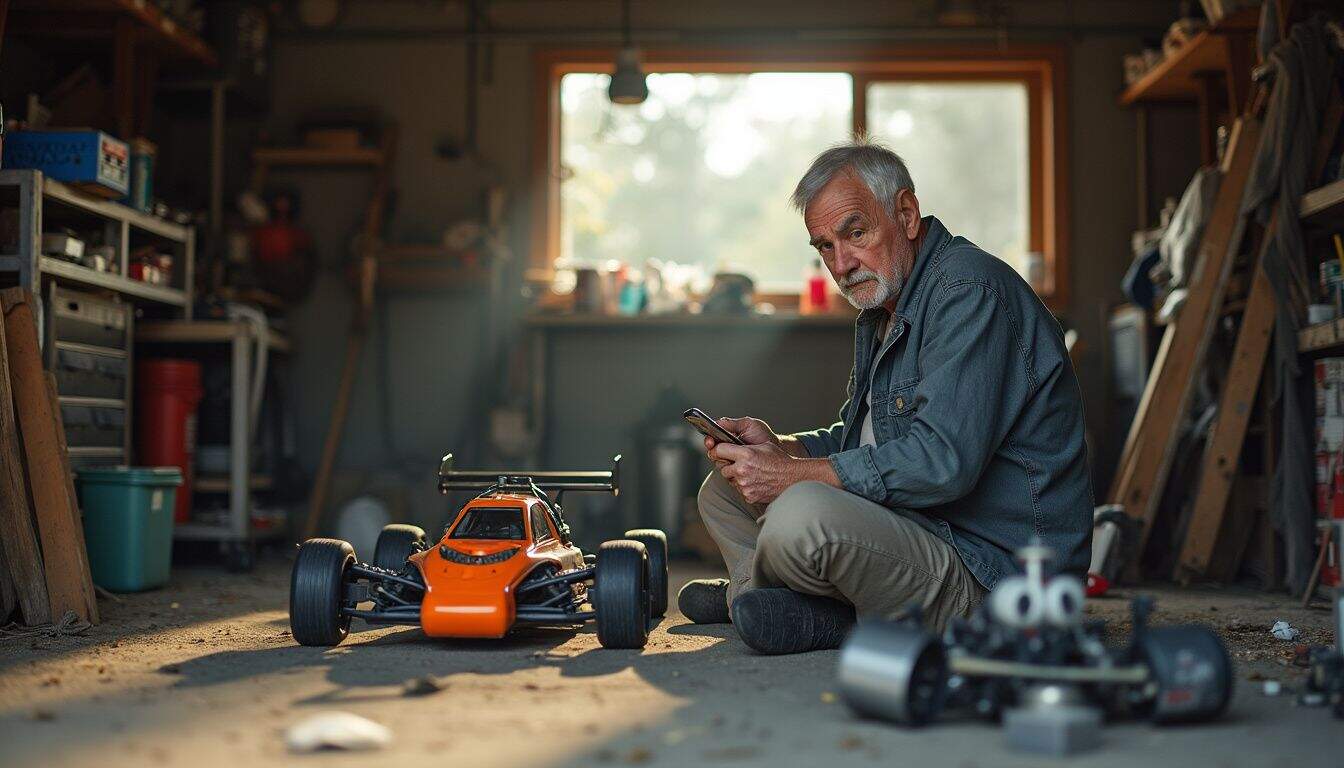
Fast cars need clean parts and calm inputs. Good habits keep speed high and parts alive.
How often should I clean and maintain my RC car components?
Consistent checks prevent breakdowns and preserve speed. Use this routine for each race week.
- Inspect the chassis, suspension, wheels, motor, ESC, radio, and battery before each run.
- Blow off dust and grit after every few packs with air or a soft brush.
- Clean the drivetrain weekly, faster if you run in dirt or sand.
- Check tires for wear or tears. Replace when grip fades.
- Verify wheel alignment and snug screws before power up.
- For nitro engines, follow break-in over the first three tanks.
- Store clean. Remove packs and set LiPos to storage voltage, about 3.7 to 3.8 per cell.
- Use low-voltage cutoff on the ESC for lithium batteries.
- Replace tired bearings every few months with race-grade sets.
Safety note: keep chemicals and cleaners away from LiPo packs. Wipe packs with dry cloth only.
What driving techniques help maximize RC car speed?
Smooth throttle keeps grip. Roll on the power early and avoid sudden spikes.
Brake in a straight line before the turn, then carry speed through the apex. Practice tight, efficient lines to shorten distance. Dirt needs gentle inputs, while tarmac lets you go full power sooner.
Driver skill often beats new hardware. Ten focused laps can do more for lap time than a new pinion gear.
How Will RC Car Speed Modifications Evolve in 2025?
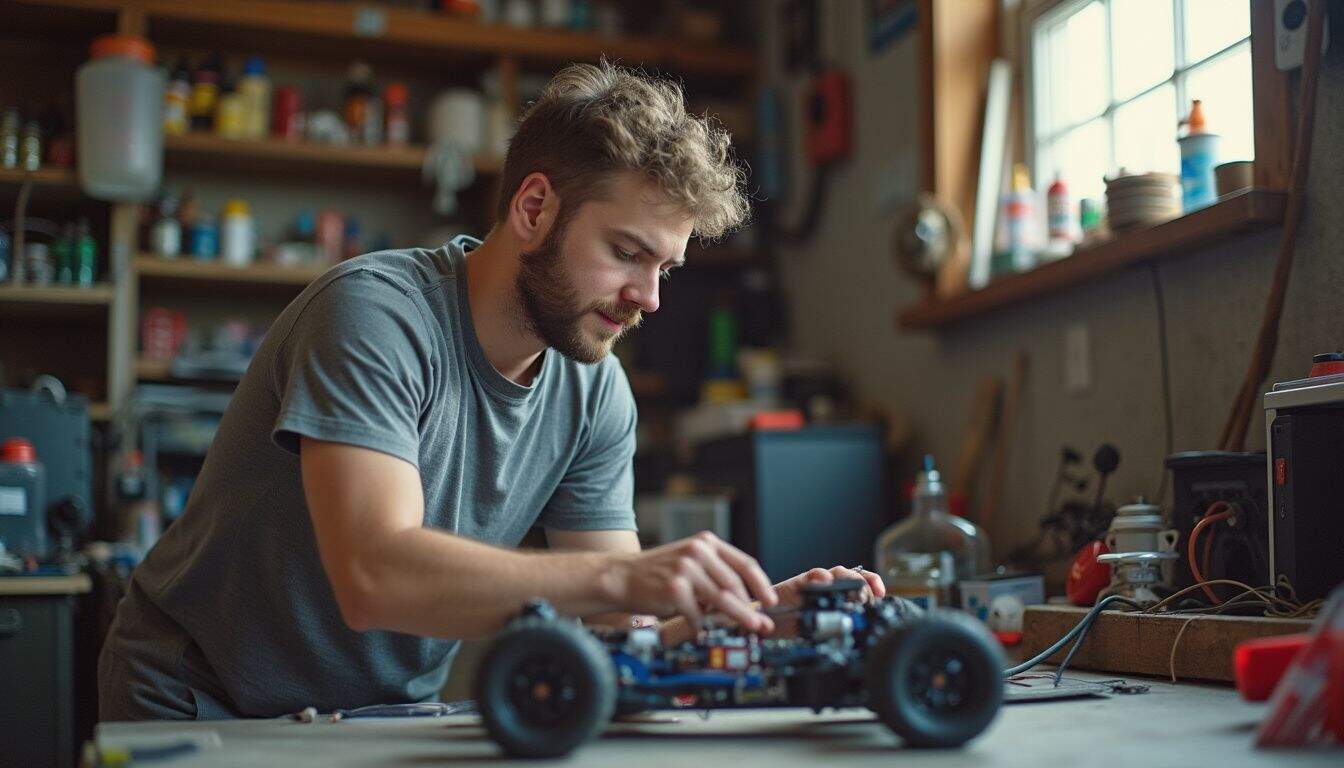
Expect easier tuning and safer power in 2025. Gear calculators now suggest ratios that fit your motor and track with minimal guesswork. Brands like Traxxas and Hobbywing offer parts that play well together across ESCs, motors, and packs.
I have tested mixed electronic combos with good results. My own car gained around 15 percent top speed without glitches.
Body shells keep getting lighter with better airflow. Some race teams test shapes with small-scale tunnel tools. Strong brushless motors and energy dense LiPos remain the core upgrades. On some builds, straight line speed rose 20 percent last month with clean installs and proper cooling.
Knowledge sharing grows too. Communities post safe, clear steps so more hobbyists can upgrade at home. Use these ideas, from battery power to gear ratio tuning and tire compound choices, to push your RC car faster while keeping it reliable.
People Also Ask
What are the top upgrades to make RC cars faster?
The nine ultimate speed upgrades include installing a high-performance motor, switching to a brushless system, upgrading the electronic speed controller, using lightweight wheels, improving aerodynamics with a new body shell, changing to low-resistance tires, optimizing gear ratios with better pinion and spur gears, replacing heavy batteries with lighter lithium polymer packs, and maintaining regular tuning for peak performance.
How does changing the motor affect my RC car’s speed?
Upgrading from a standard brushed motor to a powerful brushless model increases both acceleration and top speed; this change also improves efficiency so your car runs longer on each charge.
Why should I upgrade my RC car’s battery for more speed?
Switching from nickel-metal hydride batteries to lithium polymer packs delivers higher voltage and lighter weight; these factors combine to boost power output and reduce overall mass so your vehicle accelerates quicker.
Can adjusting gear ratios really help my RC car go faster?
Yes; selecting optimal pinion and spur gears tailors torque delivery for either greater acceleration or higher maximum velocity depending on track conditions or racing style which leads directly to improved lap times.
References
https://www.instructables.com/How-to-Upgrade-the-Battery-life-of-Your-RC-Vehicle/
https://www.radiocontrolinfo.com/how-to-make-your-rc-car-faster/ (2019-01-25)
https://www.facebook.com/groups/724784204631830/posts/2035787853531452/
https://pmc.ncbi.nlm.nih.gov/articles/PMC12098890/
https://iskbearing.com/news/knowledge/ceramic-bearings-for-rc-cars-unlocking-the-speed-potential
